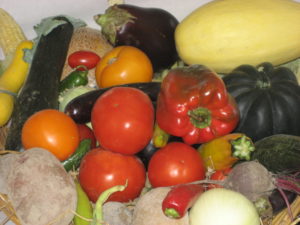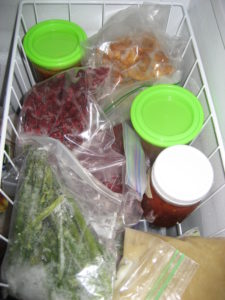
September is my favorite month to visit the farmer’s market. There is still late-summer produce available this time of the year, but fall vegetables are starting to come on, too. The variety and abundance of locally grown produce makes September an ideal time to stock up on fresh fruits and veggies and preserve them for the winter.
There are four basic ways to preserve food: freezing, drying, canning and fermenting. The ideal method for you will depend on the food you want to preserve and the usefulness of the preserved product in your lifestyle. Think about how you will use the preserved food: in a soup or casserole? A dessert? Straight out of the can or freezer? Food preservation can sometimes change the taste or texture of food, so you don’t want to invest the time and energy in preserving if the end product isn’t something you will use or enjoy.
A general rule of thumb is to preserve only products you will use within a year. You will want to take into account the time, energy and money that each method requires, as well as the amount of storage space that you have.
Freezing is my preferred method of food preservation because it is relatively quick and easy. I already have the equipment required for freezing vegetables: a freezer and freezer-safe containers for storage. Frozen vegetables retain more nutrients than canned or dehydrated nutrients when frozen properly, and they can add convenience to food preparation.
Some of the vegetables that I like to freeze include: 
- Corn and green beans for use in soups and casseroles
- Sweet potatoes and winter squash, either cubed or mashed
- Greens such as spinach, kale, collards and Swiss chard
- Root vegetables cooked into mixed dishes such as lentil soup
If you are especially interested in continuing to enjoy and preserve locally grown fruits and vegetables after the end of the traditional farmers’ market season , you may also want to consider joining a winter CSA (Community Supported Agriculture) program to. To find out whether any winter CSA programs exist in your community, talk to the farmers at your local farmers’ market or check for a local foods guide at your county Extension office.

